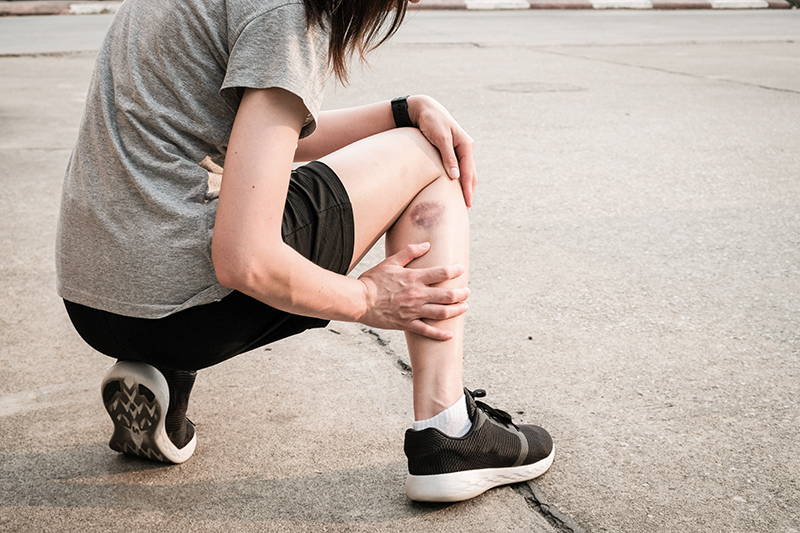Five unavoidable sport injuries
3 minute(s) read

Share
Exercise has recently become a vital part for people with healthy lifestyle and active life. Nevertheless, sport injury is unavoidable. It can frequently happen, ranging from mild to severe injuries. Sports are mainly classified into contact sports and non-contact sports. Different sports have different types of injuries which require different care and treatment options. If all instructions are followed strictly before, during and after playing sports, the risks of sport injuries are significantly reduced. However, if the injuries are inevitable, immediate medical attention provided by experienced sports medicine specialists must be sought as soon as possible.
Five unavoidable sport injuries include:
1) Sprain and strain
A sprain is a stretching or tearing of ligaments which are the tough bands of fibrous tissue that connect two bones together in the joints. Sprain is usually caused by direct contact. The most common locations for a sprain are ankle, knee and the base of the thumb. Muscle strain occurs when a muscle becomes overstretched or works suddenly too hard. Sports cause strain include shot putting, throwing a discus, throwing the Javelin, baseball, boxing and sudden stop. The difference between a sprain and a strain is that a sprain injures the bands of tissue that connect two bones together, while a strain involves an injury to a muscle or to the band of tissue that attaches a muscle to a bone.
2) Bruises
Bruises happen when small blood vessels (capillaries) in the skin are damaged by trauma or direct injuries e.g. being kicked or punched. Direct contact causes localized bleeding that extravasate into the surrounding tissues. Most bruises are not very deep under the skin so that the bleeding causes a visible discoloration. The most common areas of bruises include the chest, arms and knees. Bruises caused by physical compression might induce cell deaths and cause scarring.
3) Fracture
A fracture is a break or crack that occurs when the bone bends beyond its flexibility and cannot withstand some outside force. Strong forces such as falling over or too heavy weight cause bone break. However, a minor movement can also cause broken bones. Fractures normally happens in the ribcage, collarbone, arm, wrist, thigh, ankle and in the middle of the foot.
4) Bone dislocations
Dislocation is a condition that happens when the bones are knocked out of place. Dislocations are usually caused by falls and hard impacts such as in sports injuries. Damaged ligaments or tendons can also be another cause of bone dislocation. Common areas of bone dislocations include the shoulder, elbow, ankle, toe joint and toenail.
5) A torn muscle and a torn ligament
A torn muscle and a torn ligament are caused by heavy impact or outside force. Lifting heavy weights or strenuous exertion induces tearing of the muscle fibers and ligaments especially in people who have previously been injured. The most common areas for torn muscle or ligament are biceps, Achilles tendon, thigh muscles and patellar tendon in the knee.
There are different types of treatment for sport and fitness-related injuries which are entirely depending on types of injuries and severity. Treatments options range from oral medications, rehabilitation and surgery. It can be either monotherapy by using single approach or a combination. Due to the advancements of laparoscopic technology, arthroscopic surgery is a minimally invasive surgical procedure that is considered a main targeted therapy for sport injury treatment.
Arthroscopic surgery
A small incision is made in the patient’s skin and then pencil-sized instruments containing small lens and lighting system will be inserted through this incision to magnify and illuminate the structures inside the damaged joint. By attaching the arthroscope to a miniature television camera, the surgeon is able to visualize the interior of the joint through this small incision rather than a large cut needed for an open surgery. The images obtained from the arthroscope enable the surgeon to view the cartilage and ligaments. The surgeon can examine the type of injury and further repair or correct the problem, if it is necessary. Advantages of minimally invasive surgery include smaller incisions, less pain and fewer post-operative complications such as less blood loss and lowered rates of infection. It eventually results in a faster recovery time and a quick return to daily life and activities.
For more information, please contact
Bangkok Academy of Sports and Exercise Medicine
Share




